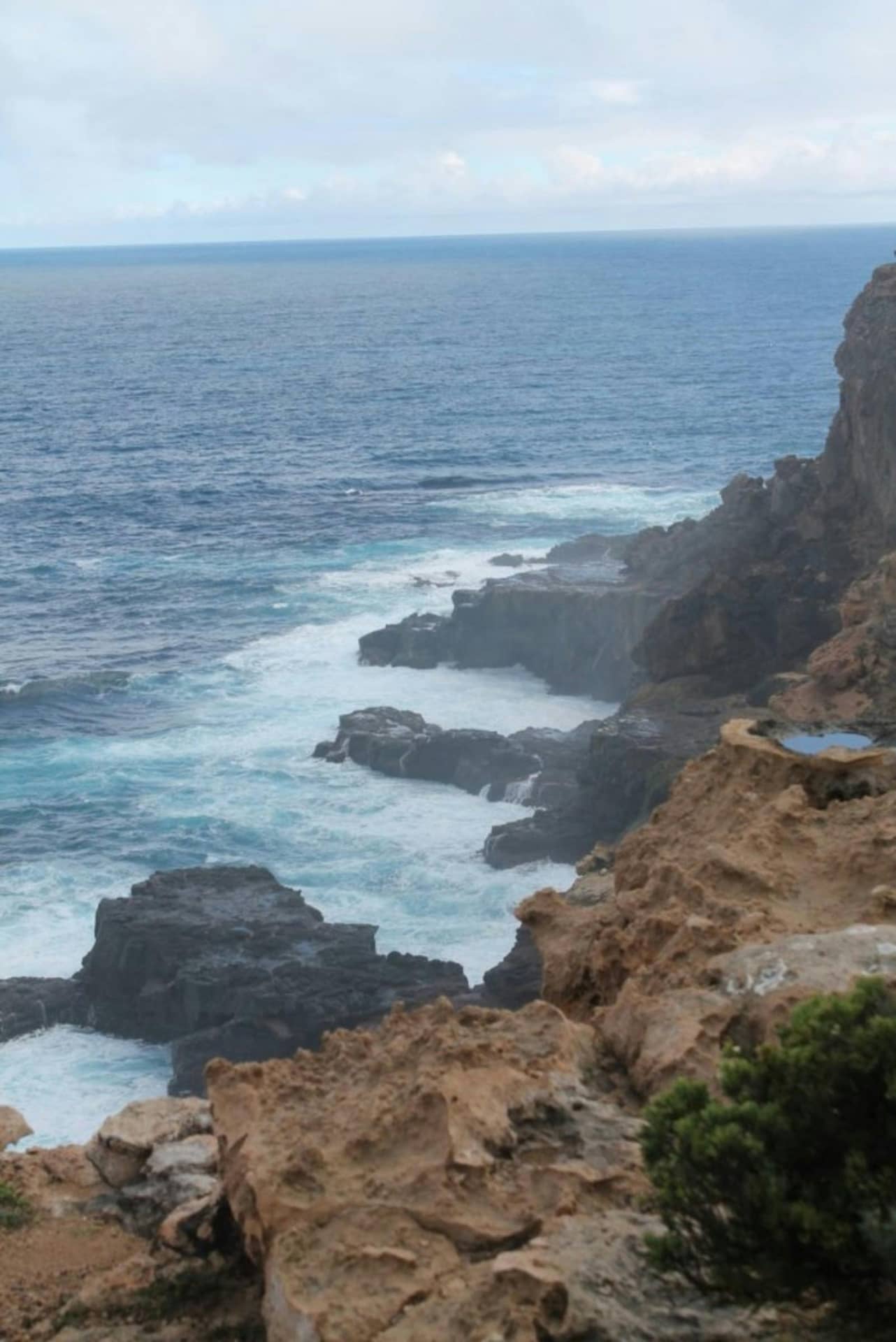Home >
Attractions > The Blowholes

Let me help you plan your Great Ocean Road trip
I am here to help you explore the Great Ocean Road region, but I’m still learning and can make mistakes. For the best local advice, visit a visitor information centre. This is a large region, so plan for travel distances and your length of stay.
Hello


The volcanic rock at the base of the cliff is formed mainly of basalt (black) and scoria (purple). Scoria is eroded more readily by the sea than basalt, causing channels and tunnels to form. This process of erosion not only creates blowholes, but in time destroys them.
Before the turn of the century there was a blowhole on the Cape which roared so loudly, that when conditions were favourable it could be heard in Portland. Sometime around 1900 it collapsed, but new ones are forming and when a good swell is running, spectacular spouts of sea spray are pushed high into the air.
This coastal area is so intriguing, that it is possible to sit and watch for hours. Local Aboriginal communities attached many legends and myths to the Blowholes and remainders of middens (scatterings of shells) can be seen along the cliff-tops.
Blowholes Road, Cape Bridgewater, VIC, 3305 Australia
Sign up to get the latest deals, tours & events along the Great Ocean Road
Great Ocean Road Regional Tourism acknowledges the Traditional Custodians of the Great Ocean Road region the Wadawurrung, Eastern Maar & Gunditjmara. We pay our respects to their Elders, past, present and emerging. We recognise and respect their unique cultural heritage and the connection to their traditional lands. We commit to building genuine and lasting partnerships that recognise, embrace and support the spirit of reconciliation, working towards self-determination, equity of outcomes and an equal voice for Australia’s first people.



